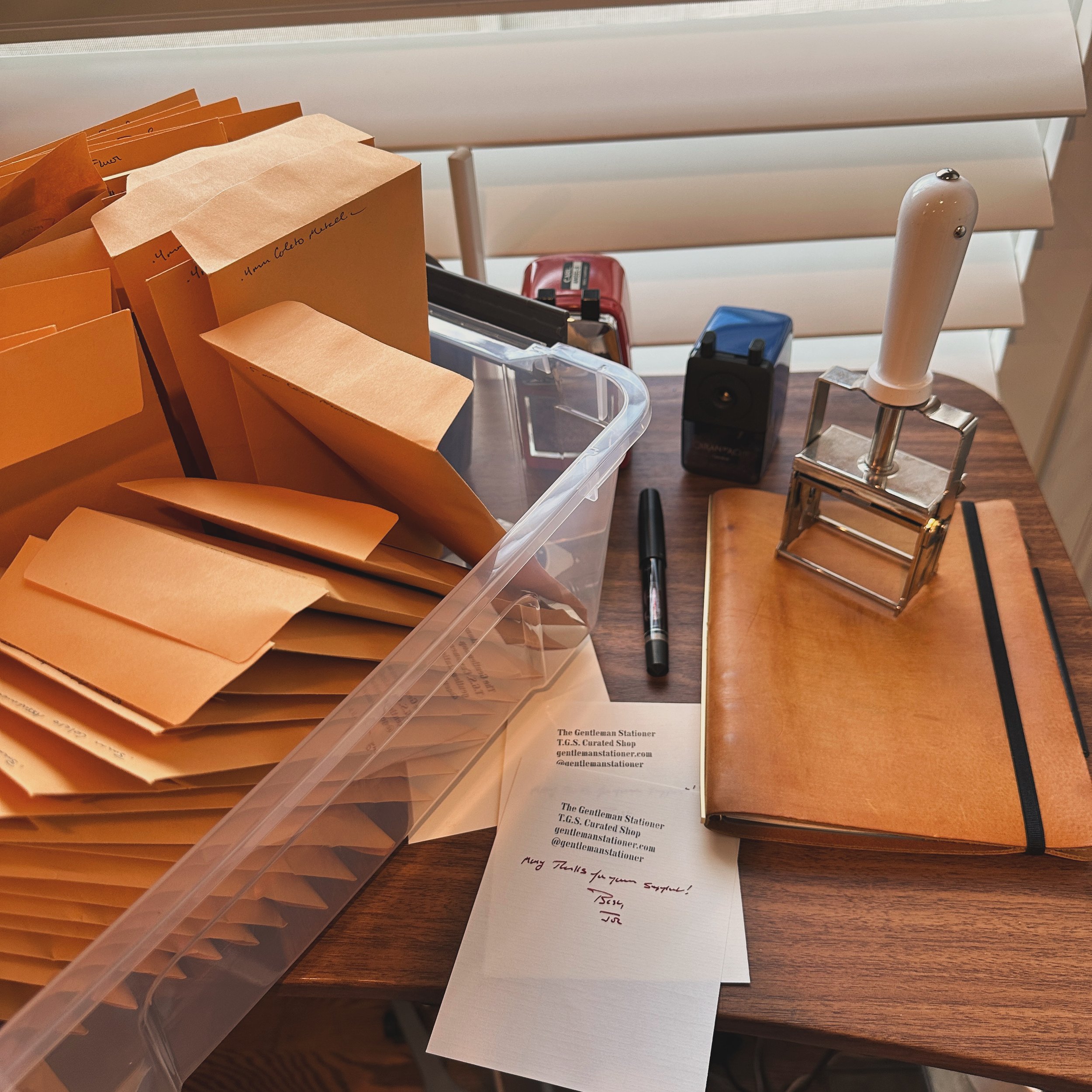Since my goal for this long weekend is to enjoy a couple of days off, I’m bringing back the tradition of recap-style posts for vacation weeks. Today, I’ve chosen five of my favorite T.G.S. posts relating to travel stationery, ranging from questions about flying with fountain pens to posts about what I travel with and use when I’m on the road. Enjoy!
Your Questions Answered: Flying with Fountain Pens. Air travel with fountain pens can be tricky, and my preferred way to avoid air-travel inksplosions is to carry a pen that features some sort of shut-off valve to minimize ink leaking out the section. In addition to the pens featured in this particular post, I’d add the bulkfiller-style pens discussed earlier this week.
Updated Travel Kit 2024: Packing Pens, Pencils, and Notebooks for a Road Trip. Over the years I’ve adapted my stationery “travel kit” to reflect different needs and preferences, mainly adding more mechanical pencils and low viscosity ballpoints, which are often simply easier options when working on airplanes and in travel lounges and conference rooms.
Travel Chronicles: Actually Traveling with a Traveler’s Notebook. Lots of people ask me about my preferred setup for a Standard-size Traveler’s Notebook, and since we’re taking a pretty significant international family trip in about 6 weeks (on which I plan to bring a Traveler’s Notebook as my primary journal), it’s a topic I’ve been thinking more about.
2023 Travelogue: What I Consider When Visiting Pen Stores and Shopping at Smaller Retailers in General. Whenever I land in a new town (or a favorite city I haven’t visited in a while), I try to visit all the local pen shops and pick up any special or exclusive editions you can’t find elsewhere. I do the same with independent bookstores.
An Overlooked Gem? The Traveler’s Company Brass Ballpoint Pen. Whenever I get the chance, I try to push the Traveler’s Company Brass Ballpoint pen, which is one of my preferred vacation pens due to its compact size and the ability to clip it to the front of a book. (Though it may be rivaled by these little Anterique ballpoints, shown above.)
The Gentleman Stationer is supported by purchases from the T.G.S. Curated Shop and pledges from the T.G.S. Patreon Program.
